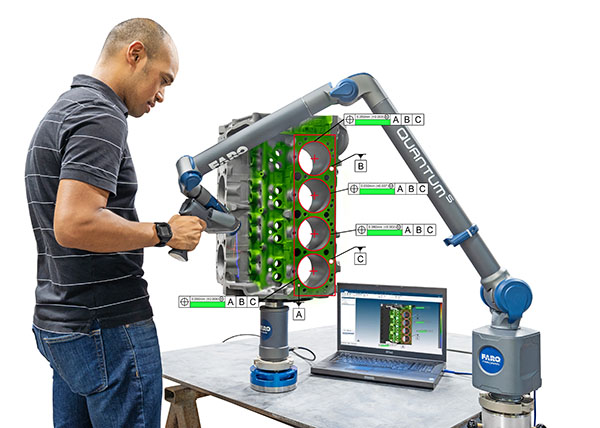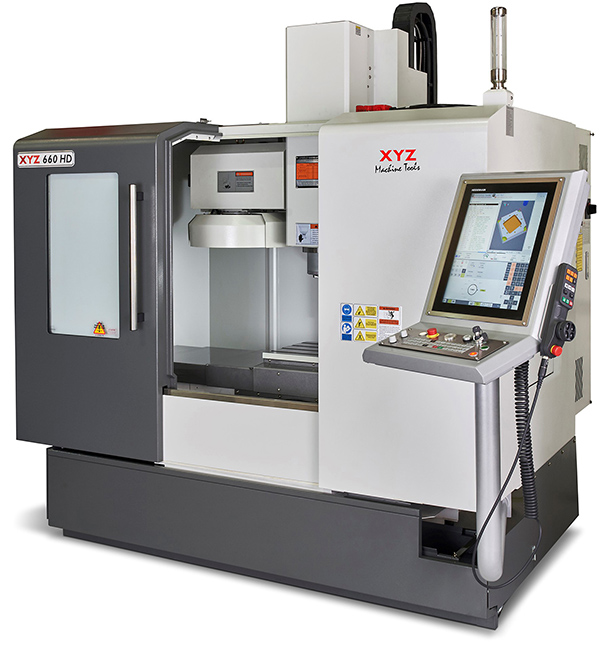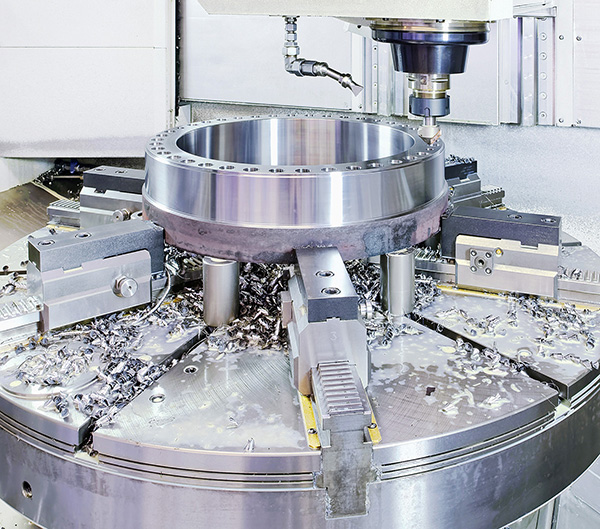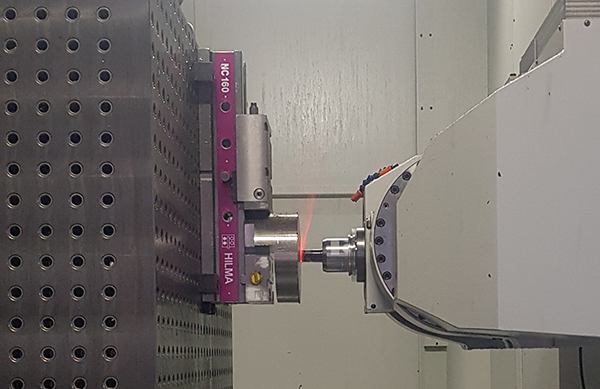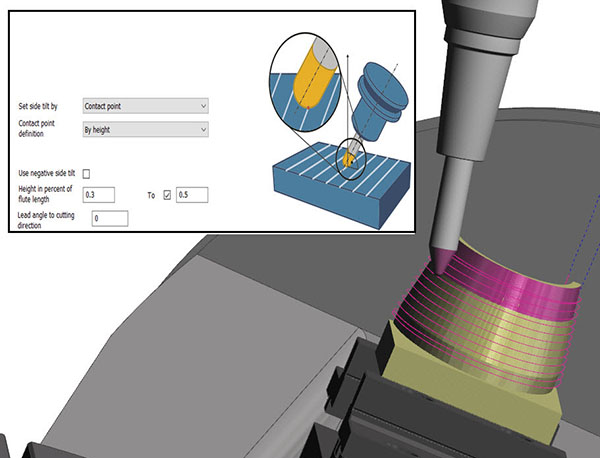Clamping devices have a significant influence on precision and cost-effectiveness when undertaking the manufacture of gearbox components. For maximum flexibility and efficiency in production, Rollstar AG has invested in a large, six-jaw pendulum compensation chuck with a quick-change jaw system and rapid adjustment mechanism. According to Schunk, the solution minimises set-up times and delivers results faster and more economically than conventional clamping solutions.

The Schunk Rota NCR 1250 six-jaw pendulum compensation chuck, which Egliswil, Switzerland-based Rollstar uses to manufacture gears on a Pittler PV 1600 vertical turn-mill centre, is a large-dimensioned chuck with novel features.
Was it a worthwhile investment? “Definitely,” says Christian Märki, purchasing manager and member of the extended management team at Rollstar. “Due to the machine design, including the clamping devices, we were able to reduce set-up times by half while decreasing the reject rate by 75%.”
The investment pays off especially for thin-walled components and high-quality materials. Here, the company’s aim was to achieve the necessary quality levels, reduce throughput times and lower the overall costs of producing deformation-sensitive parts in two operations, while ensuring process reliability.
Thanks to the Schunk Rota NCR, parts that were previously manufactured on another machine in a three-jaw chuck with a two-pressure clamping system are now being produced faster, more precisely, and with greater process reliability.

“In the past, when we clamped a ring gear, or a ring with a finished diameter of 820 mm, in a three-jaw chuck, the circularity or cross-sectional tolerance was higher than 0.1 mm,” explains Märki. “However, if we clamp the same component in the Rota NCR, we achieve cross-sectional tolerances of 0.02 to 0.03 mm. This precision increases the service life of our gearboxes even further because the rolling bearings are subjected to completely uniform loads.”
The upshot is that the gearboxes can be used much longer without any maintenance works, and sudden failures are extremely unlikely. Rollstar gearboxes are valued for their extreme reliability in tunelling and mining applications, where unplanned downtime is very costly.
The clamping concept has been developed in close co-operation between Rollstar, Pittler and Schunk lathe chuck specialists, whereby the necessary range of components, design requirements, and set-up times were systematically taken into account. According to Rollstar, the decisive factor in choosing Schunk was the combination of six-jaw chuck, quick-change jaw system, rapid jaw adjustment and Schunk’s ability to deliver quickly. Finally, the testimonials of other clients, which Rollstar visited, helped seal the deal.
The Schunk Rota NCR six-jaw pendulum compensation chuck consists of a central chuck piston carrying three inner pendulums aligned at 120°. Each pendulum is connected to two base jaws. This configuration ensures workpiece centring between six contact points, adjusted in pairs. As the clamping forces are directed towards the chuck centre, optimum centring is achieved without distortion of the workpiece. The chuck adjusts to the workpiece with its oscillating jaws.
Standard jaws can be used to replace elaborate system jaws and special solutions on the Rota NCR jaw interface, which saves time, cost-intensive special mechanisms, and reduces set-up costs. An integrated quick-change jaw system minimises set-up times on the idle machine.
“We use two sets of base jaws and set up the top jaws outside the machine; in other words, while machining is still in progress,” explains team leader Daniel Fierz. “The set-up process for the second operation then takes only 20 minutes, including cleaning.”
Here, the base jaws are pushed open, before they automatically lock in place and are secured with a quarter-turn of the torque wrench. Due to the quick jaw adjustment, the base jaw position can be adjusted easily in just a few simple steps.
“The quick adjustment feature allows me to set the clamping range in defined steps,” explains machine operator Willy Ummel. “The system works flawlessly and is easy to clean.”
In the past, up to two hours of machine downtime were required for a conventional set-up process of such workpiece sizes. Now it takes Ummel less than 30 minutes. Top jaw sets with hard chuck jaws and claw inserts are available for raw part clamping, and sets of soft top jaws are already bored in the different diameters for machining the part from the other side.
One of the main goals of the investment was for the machine to run as smoothly as possible with only minimum interruptions,” says Fierz. “The lathe chuck is so precise that we can use jaws again and again without re-boring. After exchanging the jaws, we achieve a run-out of 0.02 mm without any additional adjustment.”

The vertical position of the spindle also plays a role here. Maximum freedom of movement and, therefore, optimum centring, are assured because the components are put on to surface-ground pillars and not on the chuck jaws, as is the case with horizontal spindles.
“The vertical machine allows for significantly better oscillation than machines with a horizontal spindle, where the friction between the component and the jaws restricts the pendulum effect,” emphasises Fierz.
When finish-machining or clamping rough-turned surfaces, Ummel can clamp the Rota NCR’s pendulum in the centre position so that all six jaws move concentrically. Use of the lathe chuck has had a welcome side effect: the reject rate has fallen by around 75% since implementation. This reduction is due to dramatically less deformation, the high precision of the jaw change process and the improved flat work surface of workpieces. The reduced reject rate results in considerable savings, especially with high-quality materials such as the ferritic castings frequently used by Rollstar.
According to Märki, a decisive advantage of the clamping solution is the flexibility that Rollstar has gained in production: “Even though we typically manufacture in batches of 10, we can now squeeze in rush orders at any time without losing efficiency.”
This flexibility has allowed the company to reduce stock levels without compromising its service level. In the near future, Rollstar plans to use the chuck for machining components with diameters between 400 and 1600 mm.
“It’s easy to clean, a breeze to adjust and extremely easy to load thanks to its horizontal position,” concludes Märki.
For further information www.schunk.com







